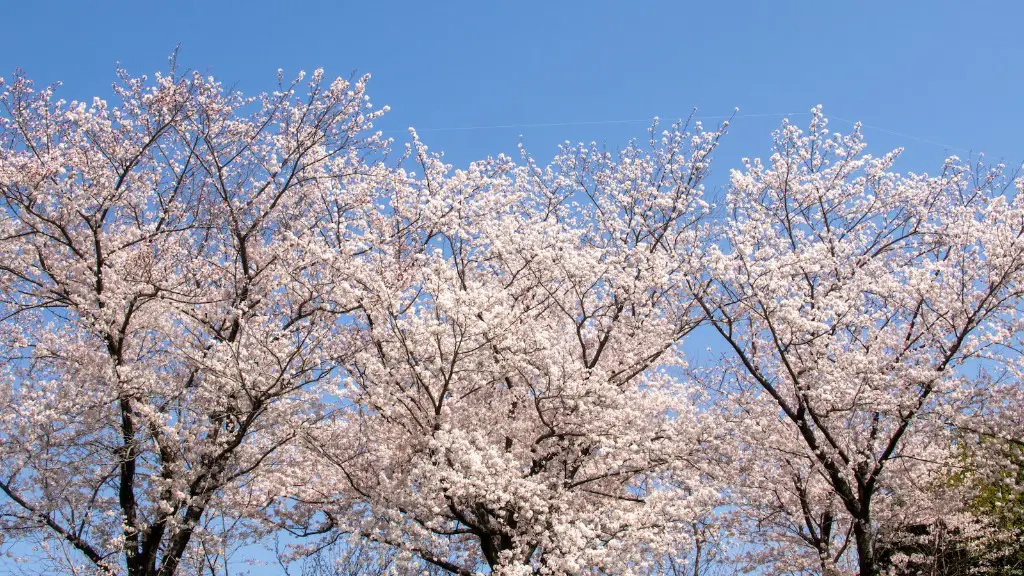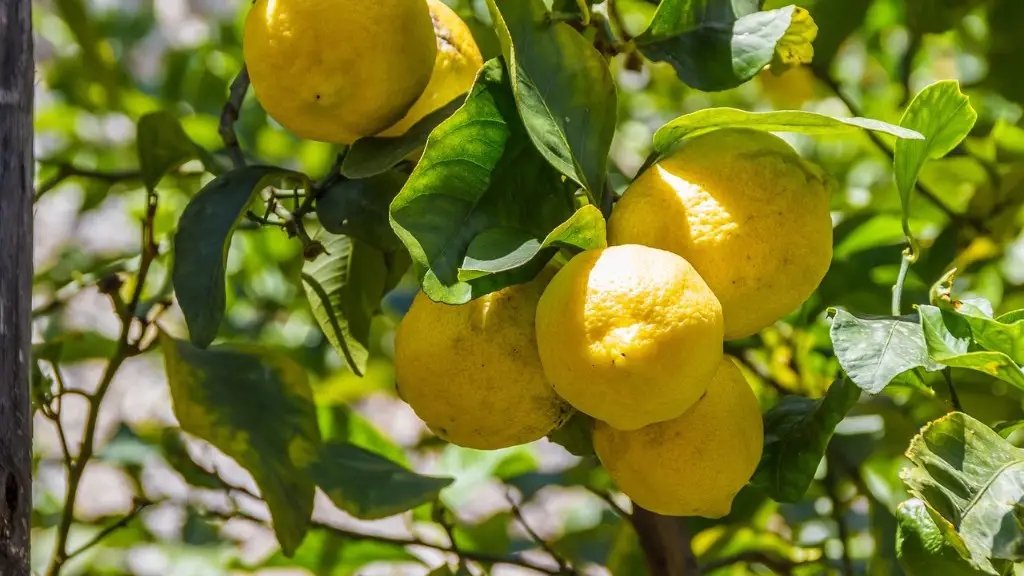Is Avocado a Tree or Bush?
As the popularity of avocados continues to rise with their versatile culinary applications, many consumers often find themselves wondering what exactly an avocado is. Is the avocado a tree, or is it a bush? To many, the answer can seem difficult to determine based on their gathering of information. Fortunately, the answer to this question is much simpler than it seems, and can be answered with the right information.
Scientists classify avocado (Persea americana) as a tree. More specifically, avocado is classified as a medium-sized evergreen tree, which yields a fruit bearing the same name as the plant itself. Despite its classification as a tree, the evergreen can take on either a tree-like or a bush-like form. The plant has thin, serrated-edged ovate leaves that are typically dark green but can also be paler, depending on their location and the types of nutrients found in the surrounding soil.
People can find avocados around the world in tropical, subtropical and Mediterranean climates. Botanists most commonly associate these climates with features such as minimal cold winters and abundant water, making these climates the optimal environmental conditions for an avocado to thrive. Avocados are also capable of withstanding temperatures as low as 23°F as long as they are of the cold-hardy variety.
The avocado tree can reach heights of up to 65 feet when mature, with a spread of 25 to 35 feet that can support up to 400 fruits in a single season. Depending on the climate, avocados can take up to four years after planting until they start to bear fruit. The time it takes for the plant to reach maturity, however, depends greatly on the care and attention it receives from its caretaker.
The fruits produced by an avocado tree are an excellent source of dietary fiber, and contain generous amounts of vitamins B, E and K. The monounsaturated fats found in avocados are also known to possess health benefits such as improved cholesterol and reduced insulin resistance. With all its health benefits combined, it is no surprise that avocado is considered such a popular product by consumers.
What is the Difference Between an Avocado Tree and a Bush?
The primary difference between an avocado tree and a bush is the size of the plant. An avocado tree typically grows to a height of 65 feet and has a spread of 25 to 35 feet, while an avocado bush is generally much shorter, rarely growing taller than 10 feet in both height and spread.
The structure of the tree’s branches also tends to differ from a bush. An avocado tree’s branches grow in an upright an outward pattern, while an avocado bush’s branches have a wide, round shape. The leaves of an avocado tree are usually longer and thinner, while those of a bush tend to be broader and more rounded.
Avocado trees require much more care and attention than bushes do, particularly when it comes to pruning. Because of their larger stature, avocado trees need regular pruning to stay healthy, maintain their size and keep their fruits in check. On the contrary, avocado bushes require less maintenance, making them ideal for those with limited gardening skills.
The care of an avocado tree also goes beyond pruning. To remain productive, avocado trees require frequent watering, the application of fertilizer and a lot of sunlight throughout the year. While avocado bushes may require the same degree of care and attention, farmers have found that avocado trees produce more and larger fruits when grown with better care.
What Other Fruits or Vegetables Belong to the Avocado Family?
The avocado tree belongs to the Lauraceae family, and is closely related to several other fruits and vegetables within the same family. These include the allspice, bay, cinnamon and several types of citrus plants. The avocado is a species of its own and is believed to be native to Central and South America, where it is still grown around the world today.
Two of the most well-known fruits that are related to the avocado are the guava and the custard apple. Both the guava and custard apple are members of the same family as the avocado and are believed to have originated in the tropical areas of the Americas. The two fruits vary in taste and texture, but they share a common trait in their fragrant aroma and sweet, rich flavors.
Aside from fruits, the avocado also shares similar traits with several leafy green and vegetable plants. These plants belong to the family of cabbage, arugula, and collard greens, among several others. All of these leafy greens and vegetables share a similar flavor and nutritional profile, making them ideal for adding to salads and sandwiches.
What Producers and Consumers Benefit From Growing Avocado Trees?
Avocado trees provide immense benefits to both producers and consumers alike. Producers are able to benefit from the commercialization of avocados, as the fruitful yield of an avocado tree can be quite valuable in the market. With the right care and attention, producers can reap the rewards of a regular return on their investment.
Consumers benefit from avocados in two distinct ways. Not only are they able to benefit from the nutritional value that avocados can provide, but they can also take advantage of their versatile culinary applications. There are countless recipes featuring avocado, ranging from smoothies and salads to salsas, sauces and even desserts.
In addition to producers and consumers, the environment is also able to benefit from the harvesting of avocados. The trees help to regulate air quality and reduce soil erosion, providing much-needed protection for the land.
How Do We Know if an Avocado is Ripe?
It is not always easy to tell if an avocado is ripe and ready to eat. To ensure that you are eating a ripe and flavorful avocado, try squeezing it gently as if you were holding a ripe peach or tomato. If the avocado yields to gentle pressure, then it is ready to be eaten. If it does not yield to pressure, then the fruit needs more time to ripen.
Another way to determine the ripeness of an avocado is to assess the color of its skin. Ripe avocados typically possess a dark green or purplish color. If you notice any reddish or brown discoloration on the surface of the skin, the avocado is likely overripe and should be discarded.
The easiest way to tell if an avocado is ripe is to remove the stem at the end of the fruit. If the stem can be removed easily, then the avocado is most likely ripe. If the stem area appears brown and only yields after a lot of force is exerted, then the avocado is not yet ripe.
What Are the Health Benefits of Eating Avocados?
Avocados are packed with essential vitamins and minerals such as vitamin K, folate, vitamin B6, and vitamin E. Avocados also contain healthy monounsaturated fatty acids, which the body uses to fuel the brain and muscles, as well as to support healthy circulation. Avocados are also an excellent source of dietary fiber, which ensures that the digestive system stays regular.
The health benefits of eating avocados extend to the heart, as well. Studies have shown that diets including avocados can reduce cholesterol levels and promote healthier arteries. Avocados are also a great source of potassium, which helps to lower blood pressure and reduce the risk of stroke.
One of the most crucial health benefits of consuming avocados is their high concentration of antioxidants, which help to fight off inflammation and free radicals throughout the body. This, in turn, helps people to stay healthy and free of disease. These powerful antioxidants can also protect against the signs of aging, from wrinkles to age spots.
Is Avocado Oil as Nutritious as Eating an Avocado?
Avocado oil is made by pressing the flesh of an avocado and is just as nutritious as eating the fruit itself. The oil is known for containing the same healthy monounsaturated fatty acids found in avocados, making it an excellent source of quality nutrition. Its high concentration of vitamins A, B, C, and E also make it a great choice for vegetarians looking to increase their intake of healthy fats.
Research has also found that the oil can be beneficial for those looking to improve their skin. Avocado oil is replete with antioxidants which, when applied topically, can help to reduce signs of aging, such as wrinkles, age spots, and fine lines. The oil also contains essential fatty acids, which help to keep skin hydrated and protected from environmental damage.
Avocado oil is also beneficial for the hair. Thanks to its high content of vitamin E, the oil can help to moisturize the scalp, improve strength and elasticity of strands, and protect against breakage. Using a few drops of the oil can also help to tame frizz, impart shine, and keep the hair looking healthy.
Wrapping Up: Is Avocado a Tree or a Bush?
Now that we have a better understanding of what an avocado looks like and how it benefits us, we can easily answer the question, is avocado a tree or a bush? To answer this question, we must first understand that an avocado is classified as a medium-sized evergreen tree. That being said, the tree can take on either a tree- or bush-like form, depending on the care and attention it is given, as well as its growing location.
Avocados are also closely related to several other plants and fruits, such as the guava and custard apple. These fruits, as well as several leafy greens and vegetables, all belong to the same family and can provide benefits to both producers and consumers alike. Ripe avocados can also be used to cook a vast array of dishes, while their oil can be used to moisturize and replenish the skin.


